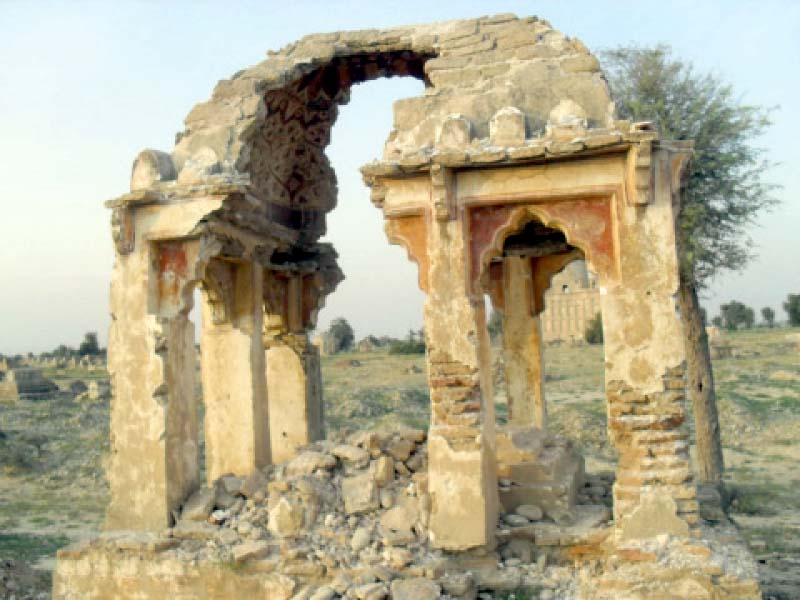
A historic graveyard in Sindh, which was once used by royal families of the province, is at the verge of destruction after a heavy downpour and subsequent floods.
Known as “Mir Allahyar ja quba” in Sindhi, the graveyard - which has been declared an official heritage site by the provincial government - belonged to the Talpur family and was built in 1731. It is situated in front of Drigh Bala town of Johi Taluka in Dadu District, which served as the headquarters of the Talpurs.
Breaches in Nai Gaj River, together with incoming water from other streams, have made created big ditches in the graveyard. As a result, several tombs have been damaged and graves have been washed away.
According to historians, Mir Allahyar Talpur, who ruled northern Sindh, belonged to the Mankani branch of the Talpur dynasty. His father, Mir Manak Khan Talpur, had founded the Drigh Bala town in 1689, situated 45 kilometres west of Dadu city.
“The family ruled Mirpurkhas area, while the Tando Allahyar town is also named after Mir Allahyar Talpur whose tomb is also crumbling at the graveyard because of frequent rains and floods,” social activist and area resident Nadir Hussain told The Express Tribune. “The tombs of other family members and rulers, including Mir Manik Talpur, Mir Chutto Khan, Mir Tharo Khan, and Mir Suleman Khan, are also gradually disintegrating.”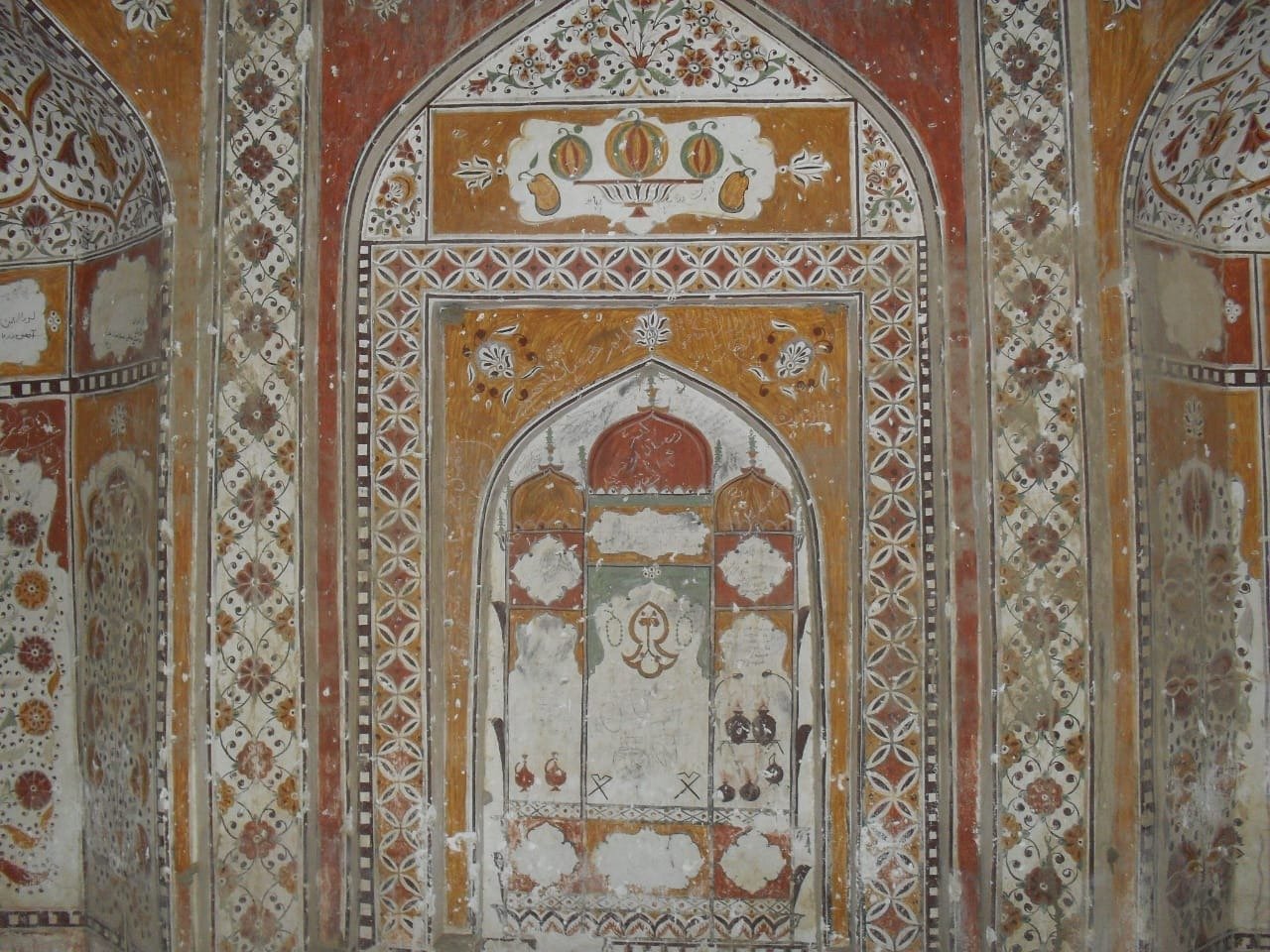
Sindhi writer Aziz Kingrani, who lives in the area, said that the tombs boast spectacular fresco and Mughal art, adding that the artists of the time have done a marvellous job by depicting the local culture of Sindh, especially the Kachho area, on the walls and roof of the tombs.
“The art inside the tombs portrays the folk wisdom, nature, terrain, the life of peasants, as well as Sindhi folklore, such as Sassi Punnuh and Suhni Mehaar. It is a heritage site and the government must take measures to protect it at all costs,” Kingrani said, adding that 1995 floods had wreaked havoc to all heritage sites in the area but no measures were taken to preserve the remains.
Area locals, who witness such adversities, particularly during the monsoon season every year, suggested that a strong wall must be built around the graveyard to save it from floods and rains.
“Not only this graveyard but many other heritage sites are found in the Kachho area, which is located in the lap of Khirthar mountain,” noted archaeologist Syed Hakim Shah Bukhari. He said that many other historical graveyards in the area, belonging to the Leghari, Jamali, and the Muridani tribes, also have beautiful tombs featuring magnificent fresco art.
“Treasure hunters have devastated our heritage sites. After the rains, groups of greedy people thronged the sites to search for gold and other valuable artefacts,” he said.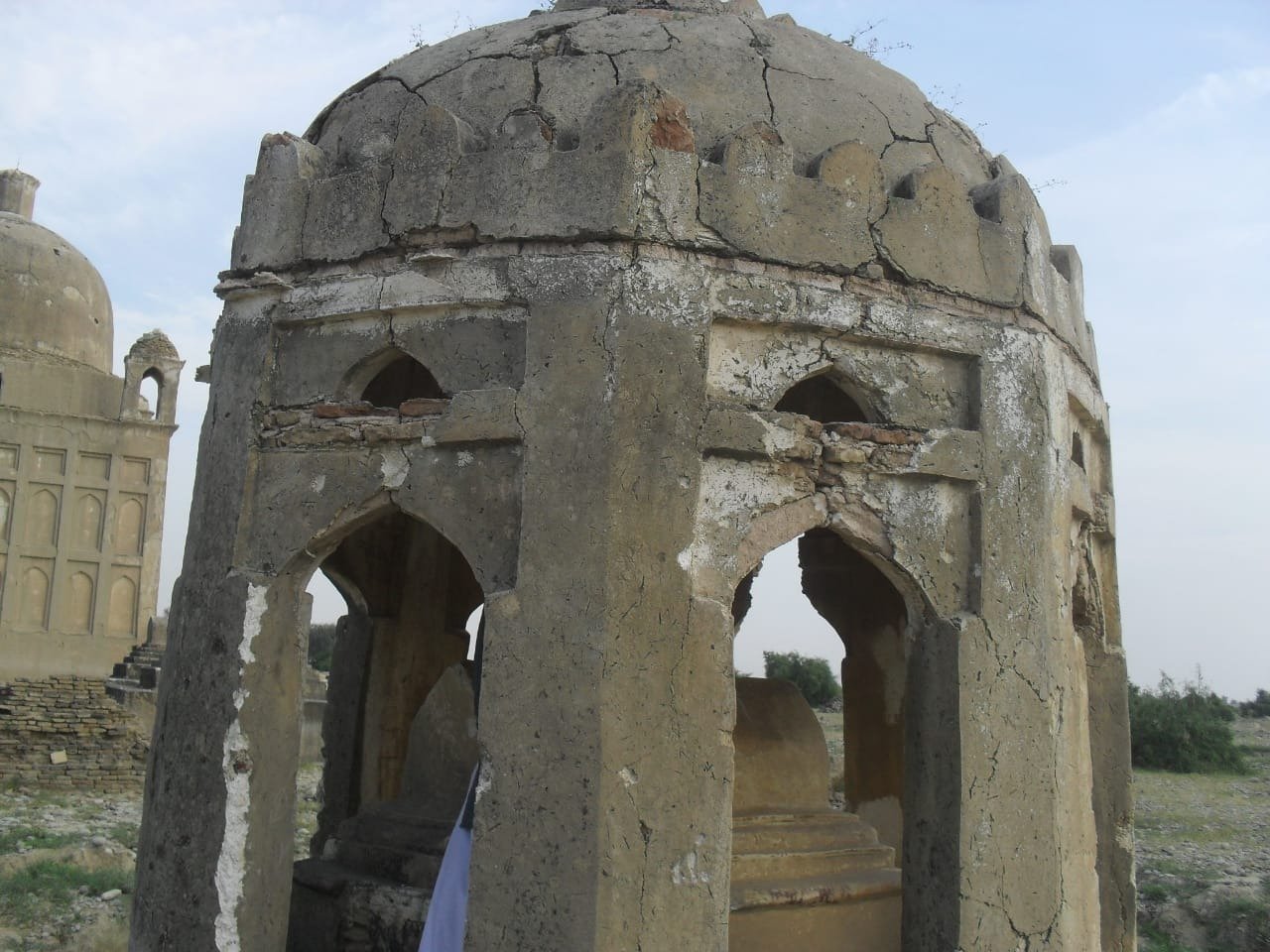
Though the provincial government and the Pakistan Army claimed to have rescued the people stranded in the Kachho area during the floods, area locals said that the authorities only reached certain areas, leaving many flooded villages unattended.
“People from many villages adjacent to Drigh Bala and Wahi Pandhi reached safer places without the government’s help. The roads and many areas are still inundated with knee-deep water,” journalist Asif Jamali said. “One can see pottery and human bones in Mir Allahyar Talpur and other graveyards when it rains and floods.”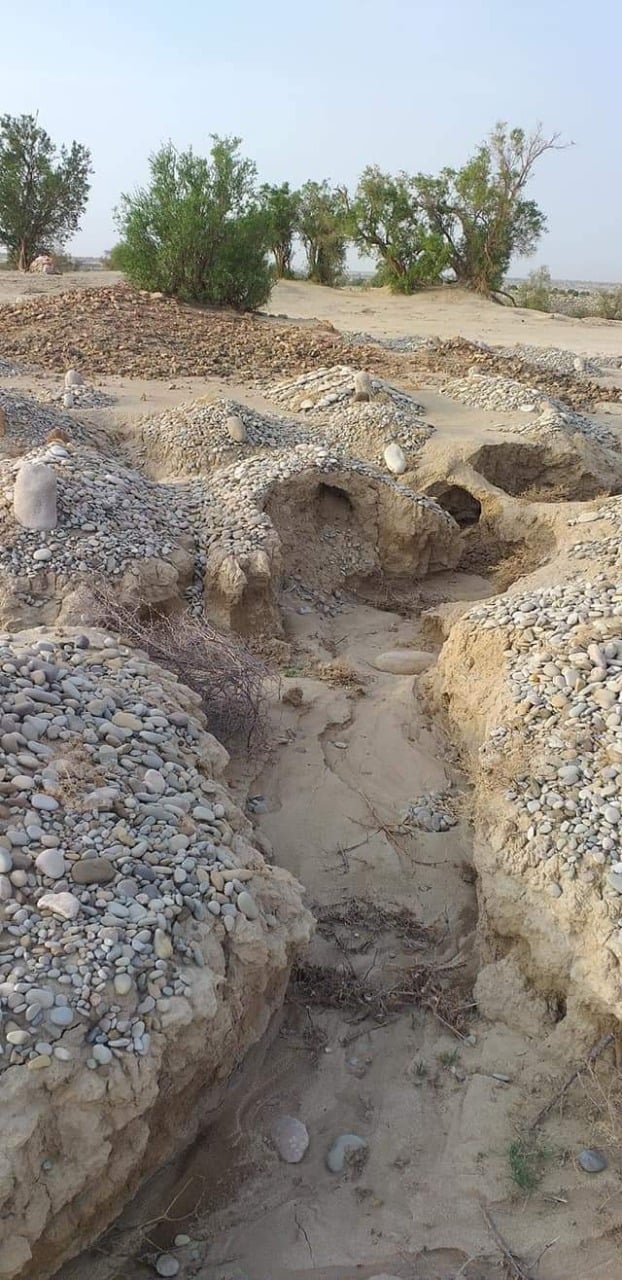
When contacted, Sindh Antiquities & Archaeology Department’s Director-General Manzoor Ahmed Kanasro said that the department would send conservation teams to the graveyard soon to assess the loss that the floods have caused to the graveyard.
(Pictures by Aziz Kingrani)
Published in The Express Tribune, August 19th, 2020.



1732266251-0/Josh-Brolin-(1)1732266251-0-165x106.webp)
1732266343-0/BeFunky-collage-(82)1732266343-0-165x106.webp)

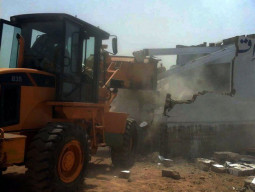











COMMENTS
Comments are moderated and generally will be posted if they are on-topic and not abusive.
For more information, please see our Comments FAQ